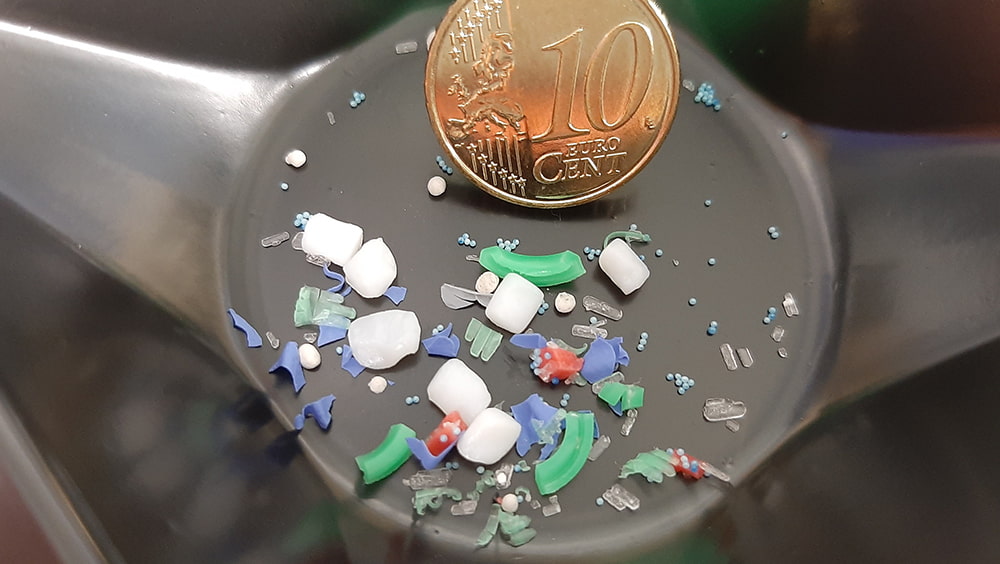How microplastic particles in water can be identified more easily in future
The joint research project "KoDeKa-Plast" between the European Center for Dispersion Technology (EZD) in Selb and the Institute for Laser Technologies in Medicine and Metrology (ILM) at the University of Ulm has been successfully completed. The researchers not only succeeded in efficiently detecting microparticles in water, but also in identifying plastic particles and even gaining insights into the release of microparticles. At the same time, the measurement effort was significantly reduced compared to conventional methods.

Due to their size, microplastic particles in water are difficult to detect. An EZD and ILM-Ulm project is showing ways to make this easier in future. (Photo: EZD)
EZD and ILM-Ulm research project demonstrates a new way of detecting microplastics
Microplastics play an important role in current social discussions. As the name suggests, these are very small particles - making detection and size assessment difficult. In particular, it is not easy to detect the particles in a liquid medium such as water with a natural particle background, especially as this should be done in the flow-through.
Identifying microplastics in the flow-through
The innovative research project "Continuous optical detection and categorization of microplastic particles in water - KoDeKa-Plast" for the determination of microplastic particles of the EZD, which is part of the SKZ Plastics Center, has now been successfully completed in cooperation with the ILM-Ulm. The project, which ran from June 1, 2021 to November 30, 2023, aimed to identify microplastics using a combination of light scattering analysis and Raman spectroscopy in the flow. Scattered light analysis offers high sensitivity in terms of the size and shape of the particles, while Raman spectroscopy can provide information about their chemical composition.
Determining the type of plastic
The scientists were able to achieve this goal by not only detecting microplastic particles from a size of 10 micrometres, but also determining the type of plastic within the water sample. The particles were successfully sized and identified in the flow-through. "We are particularly pleased that the measurement effort is significantly lower than with previous methods such as purely using a Raman microscope," says André Nogowski, Group Leader Colloidal Systems at the EZD.
Important contribution to the reduction of microplastics
Another focus of the project was the investigation of plastics and their release of microparticles. By analyzing real plastic components, it was possible to develop a better understanding of the formation of microplastic particles. At the same time, a basis was created for testing and comparing different plastics with regard to their microparticle release. In particular, aged and new plastic components were compared in the course of the work. This made it possible to gain insights into how the ageing of plastics affects the release of microparticles into the environment. With this knowledge, materials with a high release potential can be avoided in the future and an important contribution can be made to reducing the input of microplastics.
Learn more about EZD


